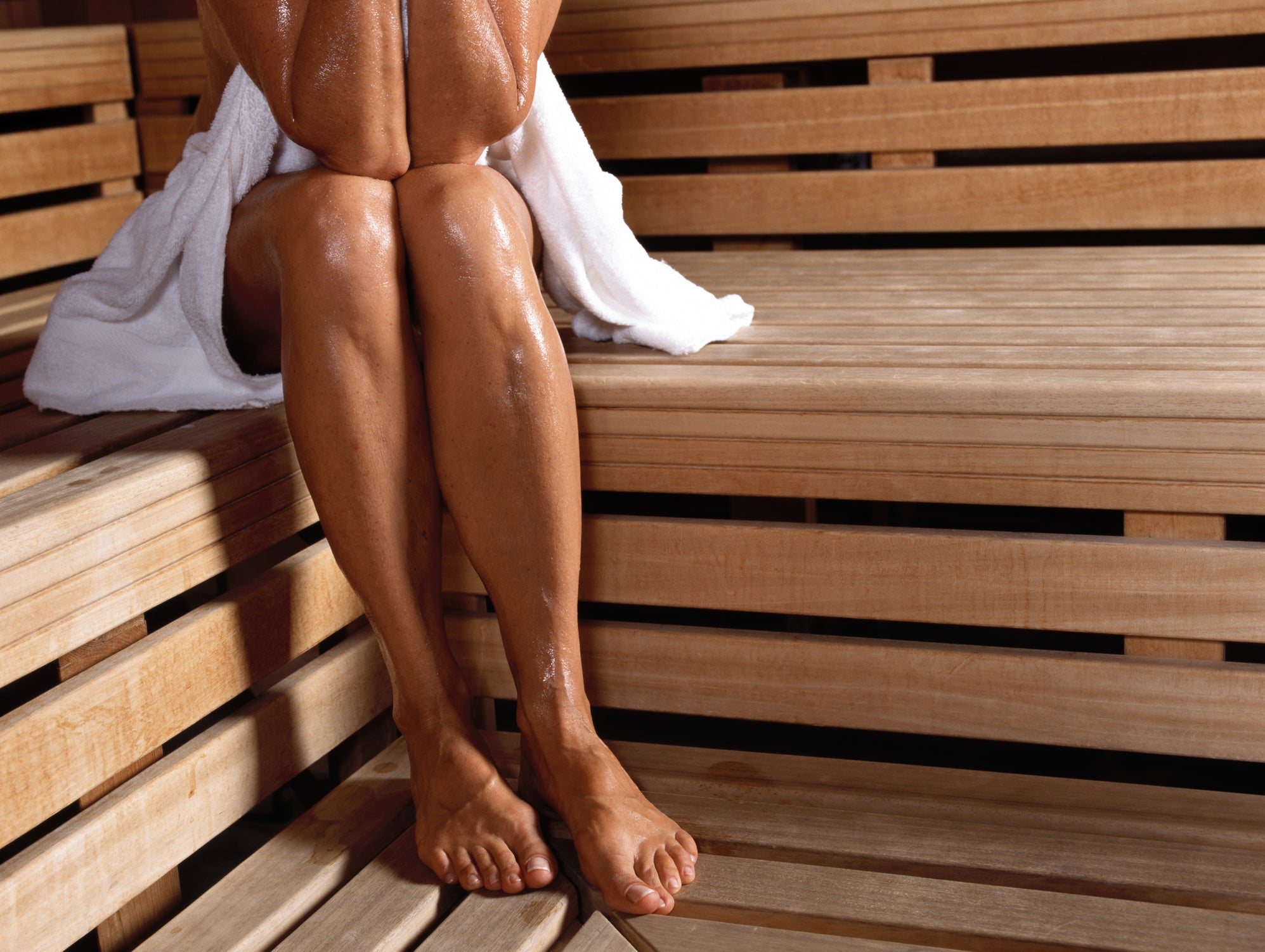Saunas: Hot Or Not?

Is it worthwhile to use the sauna?
—Dylan, San Francisco, California
The sauna is good for more than playing Nelly’s “Hot in Herre” as you disrobe to just a towel (though that is a primary benefit). Whether the sauna is worthwhile depends on your goals and background.
First, the sauna increases blood volume and may improve performance. Along with blood cells, blood contains plasma that comprises more than 50 percent of blood volume in most people. More blood volume allows the heart to pump more with each beat, which powers working muscles. And bloodflow through capillaries on the skin’s surface is how the body cools itself during exercise.
A 2015 study in the European Journal of Applied Physiology found that four sauna exposures of 30 minutes immediately after exercise can increase blood plasma volume by 17.8 percent. Theoretically, that should lead to performance benefits in all conditions, though some studies are mixed on how it impacts colder-weather performance.
RELATED: The Basics of Heat Training for Running
Second, the sauna is a quick way to heat acclimation. Most dry saunas get over 160 degrees, a temperature where the body sweats profusely and releases heat shock proteins—two of several stimuli that the body can adapt to over time. A 2015 study in the Scandinavian Journal of Medicine and Science in Sports found that a few exposures to high heat can improve subsequent performance in heat.
Third, sauna use could have benefits outside of those related solely to the heat. Some evidence points to the increase of natural production of human growth hormone and EPO, two key elements in recovery and adaptation to stress. One 2015 study in the JAMA Internal Medicine journal found that frequent sauna users lived longer, though those findings were later questioned as being a correlation without a causal mechanism.
RELATED: Heat Training for Running High
If you stopped here, it would seem that the sauna is a place of unicorns and free avocado sides. However, the sauna can add undue body strain for athletes with stressful, jam-packed lives. It could also be risky for some people with medical conditions (consult your doctor).
If you decide to use it, research indicates that it’s best done for 20 to 30 minutes after exercise in a dry sauna, which gets hotter than a steam room. It’s probably not in the top 10 list of most important things for training, but once you’ve checked off all the other boxes like maximizing aerobic training volume, doing strength work and getting massages, it could make a positive difference in your performance.
RELATED: Heat Acclimation for Athletes Who Hate the Heat
David Roche partners with runners of all abilities through his coaching service, Some Work, All Play. With Megan Roche, M.D., he hosts the Some Work, All Play podcast on running (and other things), and they wrote a book called The Happy Runner.